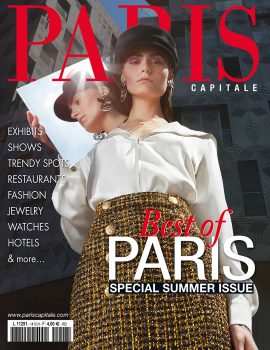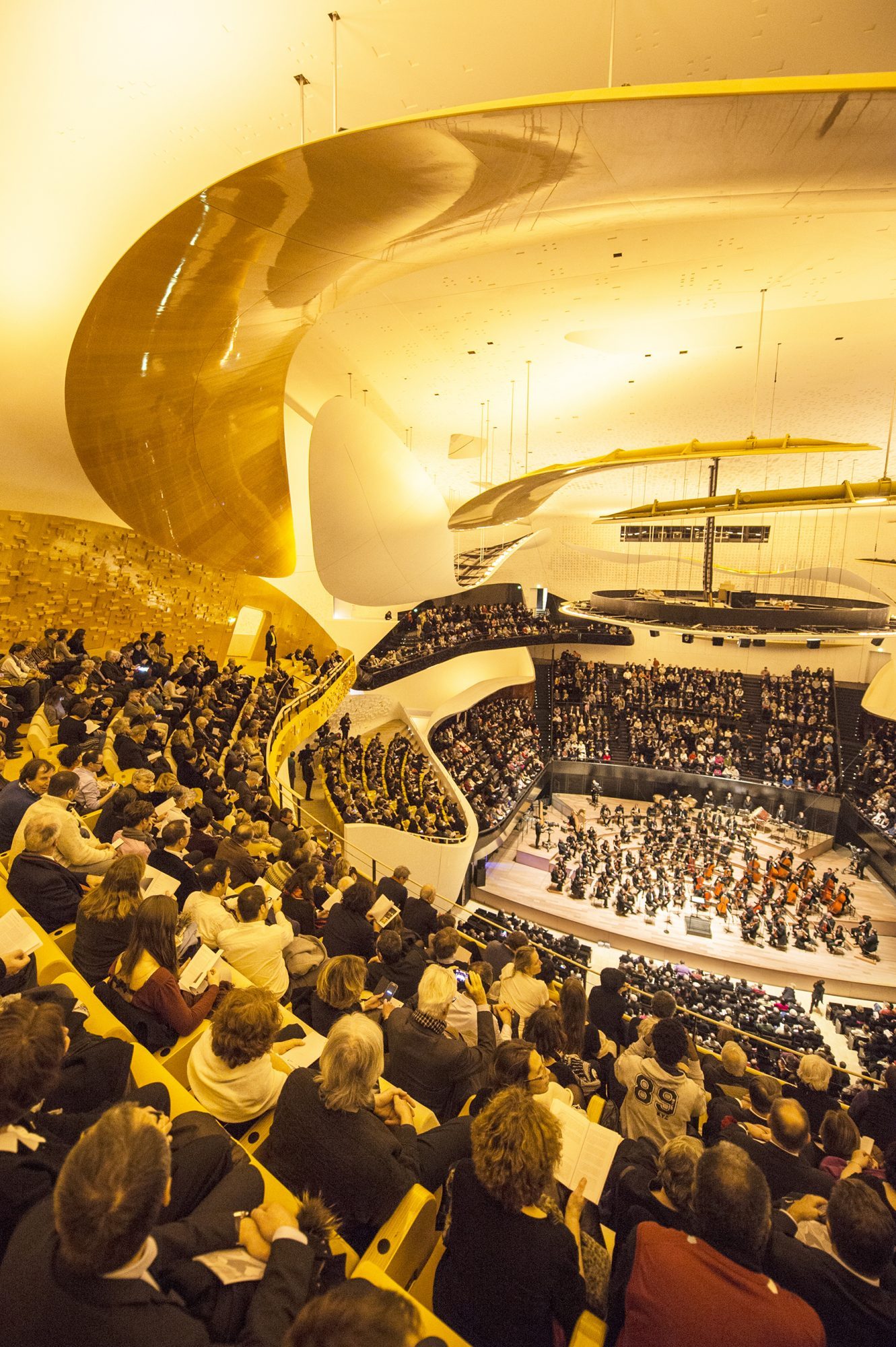Around and under the main concert hall are the dressing rooms and rehearsal rooms (the biggest of which can accommodate a large orchestra with an audience), ten studios, and a series of rooms lined with instruments that everyone can play. The building also has a 800 sq.m. exhibition space (the first exhibition was devoted to David Bowie, until August 21 The Velvet Underground exhibition shares the legacy of the illustrious but short-lived band – 1965-1970 – that marked a major turning point in the history of music), plus a conference room, bookstore and boutique, and two restaurants. On the seventh floor, Le Balcon, a “casual, relaxed contemporary” bistro will serve tapas, salads and seasonal dishes, initially only in the evening. Its panoramic views over the park and its terrace tables are sure to be a success. On the ground floor, which also gives onto the park, the Atelier d’Éric Kayser bakery and café will serve its usual pastries, light meals, sandwiches and salads, to eat in or take out. A lobby and six bars – including a Deutz champagne bar – just outside the main concert hall will be open before concerts and during the interval.To work the Philharmonie into the urban fabric, the restaurants and walkways are open to all – whether they are planning to take part in the program of activities or not – meaning that anyone can climb this architectural hill, via the main stairway or a series of gentle slopes, to a belvedere on the roof, but all of the indoor and outdoor areas are also accessible by lift. The view includes the Cité de la Musique designed by Christian de Portzamparc. Opened in 1995, the Cité, surrounded by a new set of buildings, is now called Philharmonie 2.
Philharmonie de Paris A grand design for great music

Follow us on
Instagram
Follow @ParisCapitale



